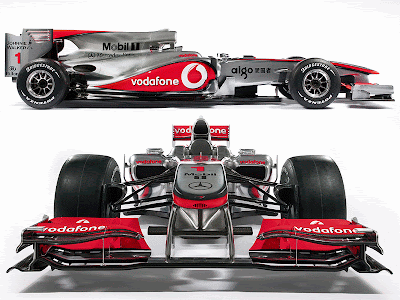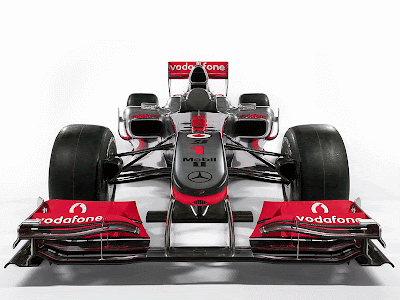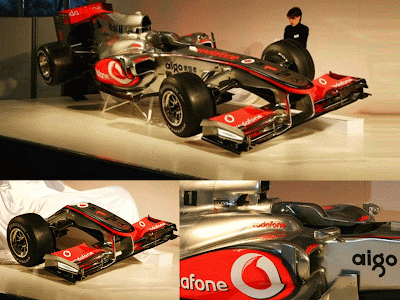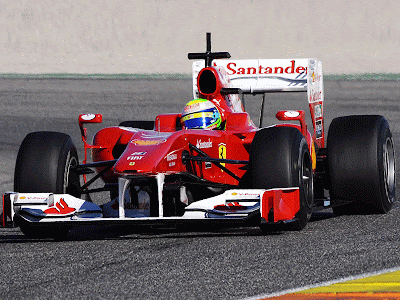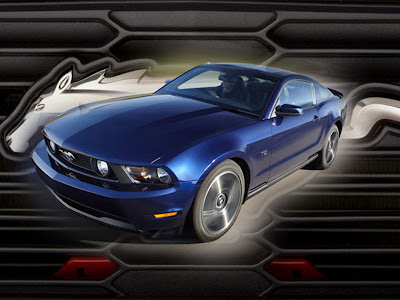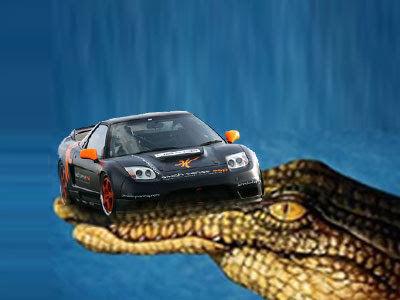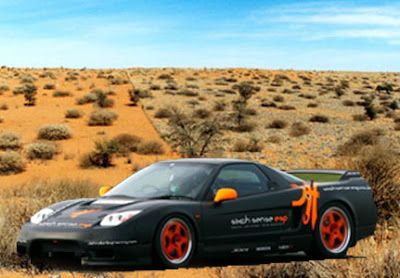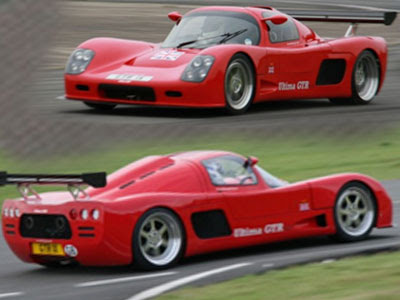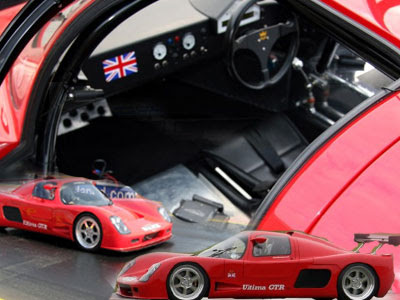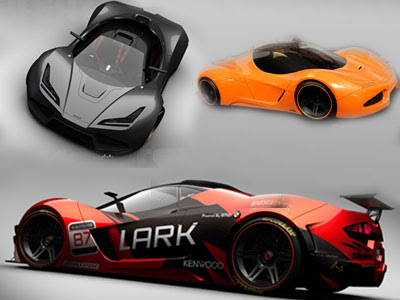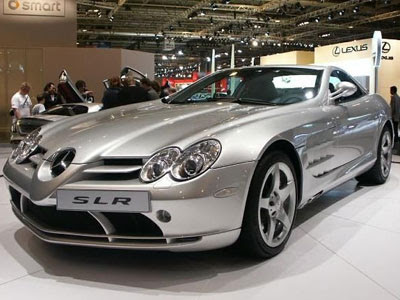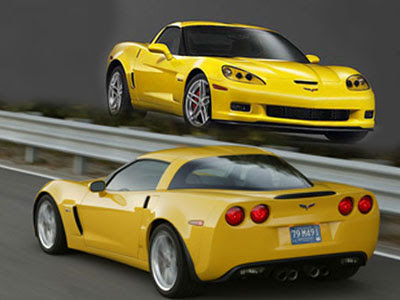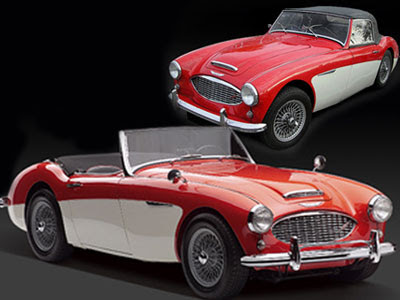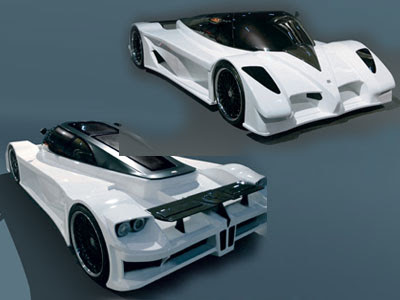Showing posts with label Race Car. Show all posts
Showing posts with label Race Car. Show all posts
While yesterday was Ferrari's turn to present his car, McLaren did today. The team presented the MP4-25, the model that will run Lewis Hamilton and Jenson Button in the Formula 1 season starting on March 14 in Bahrain. The McLaren team that will be the last two world champions in Formula 1, Jenson Button and Lewis Hamilton. According to the company, the 'MP4-25', is a car that carries the British team has worked "more than ever" to tackle "an exciting year."
2010 McLaren MP4-25 Race Car
The McLaren Mercedes team launched its new car for the 2010 season on Friday morning, with the target of clinching both titles after a mixed campaign in 2009. The Mercedes-powered MP4-25 was unveiled at Vodafone UK's headquarters in Newbury. The Vodafone McLaren Mercedes team revealed its brand new MP4-25 chassis – the car in which reigning world champion Jenson Button and 2008 world champion Lewis Hamilton will contest the 2010 FIA Formula 1 World Championship.
2010 McLaren MP4-25 Race Car
Unveiled at Vodafone UK’s stunning headquarters in Newbury, the 2010 car looks noticeably different from last year’s race-winning MP4-24. MP4-25 features a radical aerodynamic overhaul and a significantly larger fuel tank to take full advantage of this year’s new regulations, and its design team is confident it has explored every possible avenue to maximise the car’s performance.
2010 McLaren MP4-25 Race Car
Horsepower once again comes from our friends in Stuttgart. Mercedes-Benz’s FO 108X V8 subtly improves upon an engine that has become the benchmark in Formula 1, winning the last two drivers’ world championships.
2010 McLaren MP4-25 Race Car
The team kicks off its 2010 campaign with a stunning driver pairing: 2009 world champion Jenson Button and 2008 world champion Lewis Hamilton. It is the first time since 1989 – when it ran Alain Prost and Ayrton Senna – that the team has fielded a joint-world champion driver line-up, and marks the first time in Formula 1 history that the sport’s two most recent world champions have been partnered together.
2010 McLaren MP4-25 Race Car
However, the driver line-up represents only a fraction of the team’s remarkable strength in depth. Members of the design team who contributed to the development of MP4-25 can also trace their involvement back through an incredible seven of the team’s 12 drivers’ world championships, five of the team’s eight constructors’ world championships and 112 of the team’s 164 grand prix victories.
The Vodafone McLaren Mercedes team begins pre-season testing with MP4-25 at the Circuit de la Comunitat Valenciana Ricardo Tormo on Monday.
Labels: 2010, McLaren, Race Car, Sports Car
Scuderia Ferrari unveiled today its 2010 challenger, the Ferrari F10. The F10 single-seater was presented with a new livery, with both the front and the rear wing white painted. The F10 is the fifty-sixth single-seater built by Ferrari, specifically to compete in the Formula 1 World Championship. The name of the car renews the tradition of being linked to the year in which it makes its debut in the Championship. The project, which went by the internal code number 661, represents the Scuderia's interpretation of the technical and sporting regulations which apply in 2010.
2010 Ferrari F10 Formula 1
The rule clarifications issued by the FIA during the course of the previous season as regards to the diffuser have opened up new scenarious for the designers in terms of freeing up this area, thus representing the opportunity to deliver potentially great performance advantages. Compared to the F60, the F10 was obviously conceived with the aim of maximizing the aerodynamic performance of the double diffuser. Therefore the engine mountings to the chassis have been modified in a specific way and also redesigned is the shape of the gearbox casing and the rear suspension layout.
2010 Ferrari F10 Formula 1
It only takes a quick glance to note that the front part of the chassis is considerably higher than on last year's car and that the central upper and lower surfaces are hollowed out, in order to improve airflow. Another major rule change is that race refuelling is banned, which means the fuel cell has to be big enough to allow the car to get to the end of the race, whatever type of circuit. Inevitably, the car is longer to accommodate the new fuel tank and to allow the installation of longer and narrower radiators so that the sidepods have a smaller higher aperture with a more cut-out shape at the bottom. A further tapering as been achieved thanks to a revised and unconventional configuration of the exhausts.
2010 Ferrari F10 Formula 1
The need to start the race with a much heavier car than in the past has required a redesign of the basic characteristics of the braking system, carried out in conjunction with Brembo as well as a new design for the relevant cooling system.
2010 Ferrari F10 Formula 1
Safety levels have been increased thanks to the introduction of new crash tests of the rear bulkhead and the cell with a full load. In light of past incidents and the fact that pit stops will take less time, the wheel nuts have been updated so as to increase security when the car is sent back out on track.
2010 Ferrari F10 Formula 1
Before its track debut, the F10 underwent an intensive dynamic and static bench test program. Significant developments on all areas of the car are built into the program, not just in the run up to the opening round of Bahrain, but throughout the entire year.
2010 Ferrari F10 Formula 1
As always, much attention has been paid to the performance and optimization of the materials used, at the design stage and through quality control, in an effort to extract the maximum level of performance combined with the highest possible safety levels.
Labels: 2010, Ferrari, Race Car, Sports Car
2010 Muscle goes modern for the Ford Mustang - America's favorite muscle car for 45 years straight - hits the streets with a new exterior design; new world-class interior featuring well-crafted materials and updated technology; and a V8 with even more horsepower and an even throatier signature Ford Mustang exhaust sound.
Combine those elements with the new Mustang's improved handling characteristics, more standard safety and technology features and its already-strong safety and quality performance and reputation, and it's easy to see how the muscle car known around the world delivers on the promise of fast, fun and affordable performance for a whole new era.
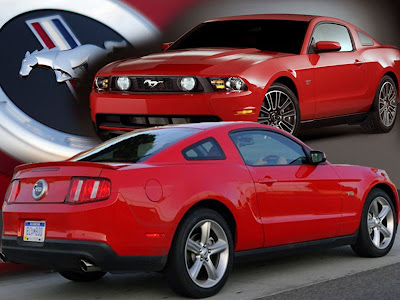 2010 Ford Mustang Sports Car 4.6-liter V8 Engine
2010 Ford Mustang Sports Car 4.6-liter V8 Engine
"The best Mustangs have always been the ones that connect young America with the spirit of the times - and the 2010 does exactly that," said J Mays, Ford's group vice president of Design. "The new Ford Mustang is close to the magnetic center of the original, fully loaded with the swagger you'd expect, but with modern refinement and attention to detail like you've never seen in a muscle car."
It starts with the more aggressive grille, punctuated with the first new Mustang emblem since the car's introduction in 1964. Both the V6 and GT have brand-new sculptured front-end designs unique to each model. The headlamps and turn indicators, now integrated into one unit, are modern interpretations inspired by the 1970 Ford Mustang. On the V6, the fog lamps are located on the lower fascia, while on the GT, the fog lamps are again located in the upper grille - but are smaller than the outgoing model, similar to the original lamps of the 1967-68 models that inspired them.
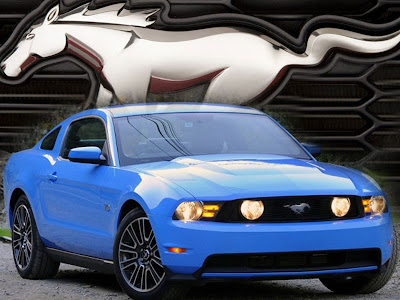 2010 Ford Mustang Sports Car 4.6-liter V8 Engine
2010 Ford Mustang Sports Car 4.6-liter V8 Engine
Cleverly combining modern technology with Ford Mustang heritage is a signature of the 2010 model, in terms of both design and engineering. The wheel-and-tire combinations are 1 inch bigger across the board, ranging from 17 to 19 inches, which helps improve handling and braking. The shocks have been retuned on all models as well. The 2010 Ford Mustang 4.6-liter V8 benefits from innovations from the popular Ford Mustang Bullitt model. Power has increased to 315 horsepower. "It runs on regular gasoline, but if you put in premium it has adaptive calibration that will give you even better mid-range torque," Barnes said, adding that Easy Fuel™, Ford's innovative capless fuel system, is standard on all models. "It's an upgrade to the most-robust, most-accessorized engine in the marketplace today," Randle added. "No one has the reliability, no one has the upgraded options. This is a fantastic engine, proven on the race track, the drag strip and on the highway."
AdvanceTrac™ Electronic Stability Control (ESC) is now standard and complements Mustang's all-speed traction control and anti-lock braking system (ABS). In addition to all of the design and driving dynamics improvements, the 2010 Ford Mustang is engineered to maintain its top government safety ratings. Standard safety equipment includes: dual stage front driver and passenger air bags; front seat-mounted side air bags; and, Ford's Personal Safety System.
The powerful new one-piece instrument panel design is crafted in seamless soft-touch TPO (Thermoplastic Olefin) skin fully encompassing available genuine aluminum-finish panels. Mustang's chromed-ringed gauges and dual-vane air register vents are precisely crafted and positioned.
With a completely redone exterior that echoes the classic Mustang designs of the past, an interior featuring world-class materials, numerous technology upgrades and an improved driving experience, the 2010 Ford Mustang is poised to become the latest classic in the proud line of Ford's iconic American muscle car.
From the V6 to the Shelby GT500, the goal was to make each model appear even more sculpted than its predecessor. The result is a lineup of iconic cars that maintain their identity in a contemporary way. Each classic design element - the grille shape, the "hockey stick,' the hop up into the rear haunch, the quarter-glass window, the three-bar tail lamp, the center-mounted gas cap - is modernized in a way that lends the new car even more presence and character. The aggressive look is enhanced by larger grille openings flanked by slimmer headlamps, which now incorporate integrated turn indicators.
The team further enhanced the agile design by stripping away unnecessary clutter. That included minimizing overhangs, eliminating the rear key-hole cylinder, chamfering the rear corner and simplifying the pedestal spoilers to a more compact design. The antenna, previously on the front fender, is now much shorter and relocated to the rear of the 2010 Ford Mustang. The result is a clean, sporty design that looks smart and efficient.
Another inherited and distinctly identifiable Ford Mustang cue comes in the form of the tri-bar tail lamps. The three individual red chambers, each lit sequentially by a single Luxion LED, are separated by two clear vertical back-up elements, ensuring the tri-bar look is recognized in lit or unlit conditions. The sequential illumination of each chamber is a unique and important characteristic of the 2010 Mustang's identity.
Extensive improvements to the next-generation Ford Mustang, readily apparent on the exterior design and interior content and material upgrades, will be felt in the ride and handling of the 2010 model. Taking a cue from the successful Mustang Bullitt and Ford Racing vehicles, many of those enhancements are carried through the full Ford Mustang lineup.
Tires are increased by an inch across the Ford Mustang line, with 17-inch tires standard on the V6 and 18-inch tires standard on the V8. A 19-inch Pirelli Summer tire is late available as an option for those seeking higher performance. Design and engineering teams spent a lot of time honing the aerodynamics of the 2010 Ford Mustang, ensuring that both the aerodynamic drag and lift balance were improved for better overall efficiency.
In true Ford Mustang tradition, there is a "steed for every need." At launch, customers can choose from a V6 or V8 with their choice of coupe, convertible or innovative glass roof, plus several new options and features delivering the opportunity for customers to personalize their cleaner, meaner-looking Mustangs.
 2010 Ford Mustang Sports Car 4.6-liter V8 Engine
2010 Ford Mustang Sports Car 4.6-liter V8 Engine"The best Mustangs have always been the ones that connect young America with the spirit of the times - and the 2010 does exactly that," said J Mays, Ford's group vice president of Design. "The new Ford Mustang is close to the magnetic center of the original, fully loaded with the swagger you'd expect, but with modern refinement and attention to detail like you've never seen in a muscle car."
It starts with the more aggressive grille, punctuated with the first new Mustang emblem since the car's introduction in 1964. Both the V6 and GT have brand-new sculptured front-end designs unique to each model. The headlamps and turn indicators, now integrated into one unit, are modern interpretations inspired by the 1970 Ford Mustang. On the V6, the fog lamps are located on the lower fascia, while on the GT, the fog lamps are again located in the upper grille - but are smaller than the outgoing model, similar to the original lamps of the 1967-68 models that inspired them.
The exterior sheet metal, except for the fast-back roofline, is all new for 2010. At the front, the new headlamps, lower fascias, fenders and grille are capped by a powerdome hood that adds to the muscular appearance while functionally allowing for enhanced air cooling of the engine. Mustang's washer-fluid nozzles are tucked into the cowl, while the antenna has been moved to the rear, both of which create a cleaner appearance while also reducing wind noise. The rear end design features aggressively angled rear corners, a sculptured decklid and prominent rear badge. A rear-view camera incorporated into the spoiler is available on some models.
 2010 Ford Mustang Sports Car 4.6-liter V8 Engine
2010 Ford Mustang Sports Car 4.6-liter V8 EngineCleverly combining modern technology with Ford Mustang heritage is a signature of the 2010 model, in terms of both design and engineering. The wheel-and-tire combinations are 1 inch bigger across the board, ranging from 17 to 19 inches, which helps improve handling and braking. The shocks have been retuned on all models as well. The 2010 Ford Mustang 4.6-liter V8 benefits from innovations from the popular Ford Mustang Bullitt model. Power has increased to 315 horsepower. "It runs on regular gasoline, but if you put in premium it has adaptive calibration that will give you even better mid-range torque," Barnes said, adding that Easy Fuel™, Ford's innovative capless fuel system, is standard on all models. "It's an upgrade to the most-robust, most-accessorized engine in the marketplace today," Randle added. "No one has the reliability, no one has the upgraded options. This is a fantastic engine, proven on the race track, the drag strip and on the highway."
AdvanceTrac™ Electronic Stability Control (ESC) is now standard and complements Mustang's all-speed traction control and anti-lock braking system (ABS). In addition to all of the design and driving dynamics improvements, the 2010 Ford Mustang is engineered to maintain its top government safety ratings. Standard safety equipment includes: dual stage front driver and passenger air bags; front seat-mounted side air bags; and, Ford's Personal Safety System.
The powerful new one-piece instrument panel design is crafted in seamless soft-touch TPO (Thermoplastic Olefin) skin fully encompassing available genuine aluminum-finish panels. Mustang's chromed-ringed gauges and dual-vane air register vents are precisely crafted and positioned.
With a completely redone exterior that echoes the classic Mustang designs of the past, an interior featuring world-class materials, numerous technology upgrades and an improved driving experience, the 2010 Ford Mustang is poised to become the latest classic in the proud line of Ford's iconic American muscle car.
From the V6 to the Shelby GT500, the goal was to make each model appear even more sculpted than its predecessor. The result is a lineup of iconic cars that maintain their identity in a contemporary way. Each classic design element - the grille shape, the "hockey stick,' the hop up into the rear haunch, the quarter-glass window, the three-bar tail lamp, the center-mounted gas cap - is modernized in a way that lends the new car even more presence and character. The aggressive look is enhanced by larger grille openings flanked by slimmer headlamps, which now incorporate integrated turn indicators.
The team further enhanced the agile design by stripping away unnecessary clutter. That included minimizing overhangs, eliminating the rear key-hole cylinder, chamfering the rear corner and simplifying the pedestal spoilers to a more compact design. The antenna, previously on the front fender, is now much shorter and relocated to the rear of the 2010 Ford Mustang. The result is a clean, sporty design that looks smart and efficient.
Another inherited and distinctly identifiable Ford Mustang cue comes in the form of the tri-bar tail lamps. The three individual red chambers, each lit sequentially by a single Luxion LED, are separated by two clear vertical back-up elements, ensuring the tri-bar look is recognized in lit or unlit conditions. The sequential illumination of each chamber is a unique and important characteristic of the 2010 Mustang's identity.
Extensive improvements to the next-generation Ford Mustang, readily apparent on the exterior design and interior content and material upgrades, will be felt in the ride and handling of the 2010 model. Taking a cue from the successful Mustang Bullitt and Ford Racing vehicles, many of those enhancements are carried through the full Ford Mustang lineup.
Tires are increased by an inch across the Ford Mustang line, with 17-inch tires standard on the V6 and 18-inch tires standard on the V8. A 19-inch Pirelli Summer tire is late available as an option for those seeking higher performance. Design and engineering teams spent a lot of time honing the aerodynamics of the 2010 Ford Mustang, ensuring that both the aerodynamic drag and lift balance were improved for better overall efficiency.
Labels: 2010, Ford, Ford Mustang, Race Car, Sports Car, V8
2009 Honda NSX
The unique Japanese sportscar Honda NSX has been built by John Danby Racing to comply with the Britcar Production regulations and completed a successful shakedown test at Snetterton in Norfolk last Friday with sportscar racer James Barclay.
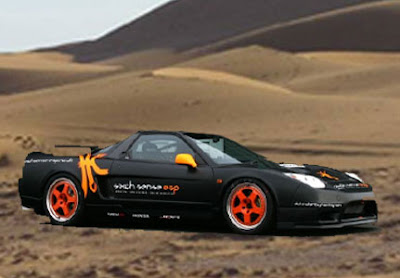
2009 Honda NSX
The Honda NSX features the latest technology gizmos and features innovative engine control and data-logging capabilities including GPS, Fly by Wire and live feed video. High specification custom solutions have also been engineered for the NSX such as dampers and brakes.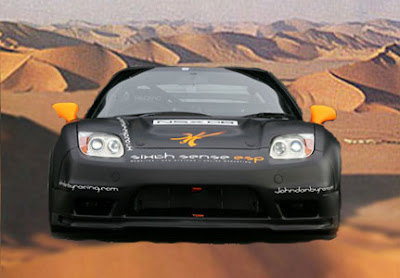

2009 Honda NSX
We gather that you’ll appreciate these photos of John Danby Racing team’s newly developed (and oh-so sizzling hot) Honda NSX racer. The matte black Japanese sportscar was built to comply with the Britcar Production regulations and has already completed a successful shakedown test last Friday ahead of its debut at the season’s final round at Brands Hatch on November 7.
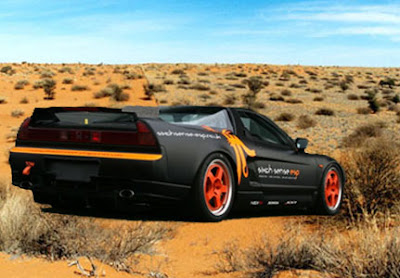
Labels: 2009, Honda, Race Car, Racing Car, Sports Car
The Ferrari California is an exceptionally innovative car whose philosophy takes its inspiration from the spirit and emotions of one of the great Ferraris of the past, the 1957 250 California, a superbly elegant open top car designed for the track, which has, over the years, come to symbolise not only superior sportiness and performance but also exclusivity, craftsmanship and faultless sophistication.
The Ferrari California is available exclusively as a convertible with retractable folding hard top in either a two-seater version with a traditional rear bench or in the 2+2 version which sees the rear bench equipped with seating for one to two passengers. In addition to its retractable hard, the California also offers a new direct injection V8 engine, a 7-speed dual clutch gearbox with steering wheel-mounted F1-style, an evolved F1-Trac traction control system, and standard Brembo brakes with CCM (carbon ceramic material) discs. This is the first V8 in the history of Ferrari road-cars to be mid-front mounted. Built entirely from aluminium, it retains the typical Ferrari architecture with a 90° angle between the two cylinder banks and a 180° angle between the cranks. The Ferrari California has length 4.563 mm, width 1.902 mm, height 1.308, wheelbase 2.670 mm, front track 1.630 mm, and rear track 1.605 mm.
Ferrari California is car with 8 cylinders has maximum output reached 460 Hp or equal 107 Hp/liter in 7,750 rpm. With a specific power of over 105 hp per liter, its maximum torque is 358 lb-ft at 5,000 rpm, 75% of which is available at just 2,250 rpm. The Ferrari California takes less than 4 seconds to accelerate from 0 - 60 mph and delivers a blistering 192 mph top speed. The new V8 features direct fuel injection and variable timing (on both intake and exhaust) to guarantee superb performance, exceptional handling, and fuel consumption and emissions that easily comply with the toughest Euro 5 and Lev2 standards Even can drive in high speed, the Ferrari California has an ideal balance.The California's mission is slightly different than other Ferraris; the all-new model is aimed more at a buyer who may not have considered Ferrari before, one who wants both high performance and high-end luxury.This new car joins Ferrari's 8-cylinderrange, so far consisting of the mid-engine models like the F430 only, as the first 8-cylinder Gran Turismo. 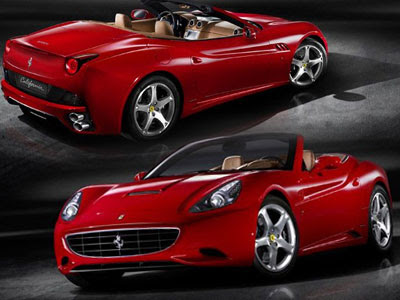 .....................................Ferrari California
.....................................Ferrari California
 .....................................Ferrari California
.....................................Ferrari California The Ferrari California is available exclusively as a convertible with retractable folding hard top in either a two-seater version with a traditional rear bench or in the 2+2 version which sees the rear bench equipped with seating for one to two passengers. In addition to its retractable hard, the California also offers a new direct injection V8 engine, a 7-speed dual clutch gearbox with steering wheel-mounted F1-style, an evolved F1-Trac traction control system, and standard Brembo brakes with CCM (carbon ceramic material) discs. This is the first V8 in the history of Ferrari road-cars to be mid-front mounted. Built entirely from aluminium, it retains the typical Ferrari architecture with a 90° angle between the two cylinder banks and a 180° angle between the cranks. The Ferrari California has length 4.563 mm, width 1.902 mm, height 1.308, wheelbase 2.670 mm, front track 1.630 mm, and rear track 1.605 mm.
Today, Ford Racing unveiled the 2010 Ford Mustang Cobra Jet at the Specialty Equipment Market Association (SEMA) show, which marks the continued evolution of the CJ as a factory-produced turnkey race car. In honor of the SEMA introduction, Ford Racing built and unveiled a one-of-a-kind "SEMA Special" silver Ford Mustang Cobra Jet complete with a charcoal Cobra Jet graphics package.
"With the 2010 Ford Mustang Cobra Jet, we had the luxury of a longer development cycle and the result is absolutely stunning. Where the 2008 Cobra Jet was an extremely potent starting point for NHRA Stock competition, the 2010 will enhance the car further. We are all excited to see the new Ford Mustang Cobra Jet in competition."
The 2010 Cobra Jet, like its predecessor, is a factory-built race car that is intended for NHRA Stock and Super Stock racing. The goal for the 2010 Ford Mustang Cobra Jet was to enhance the race features to further make its own place in NHRA history. The 2010 CJ will come with all of the features of the 2008 car with enhancements that include options for a full race-prepared automatic or manual transmission, drag race-specific shocks and springs, manual steering and brakes, 8.50 certified rollcage, and an Aeromitive return-style fuel system with trunk-mounted fuel cell.
Much like Ford Racing's previous Mustang FR500S race car, the Cobra Jet Mustang will get its start at the Auto Alliance International (AAI) assembly plant in Flat Rock, Mich. The entire 50-car run of 2010 Cobra Jets will be built on the same production line that produces the 2010 Ford Mustang production car. Production of Cobra Jets will commence in January, with delivery of all vehicles expected in the first quarter of 2010.
The 2010 CJ car features a choice for customers between two supercharged engines or three normally aspirated engines (pending NHRA approval). These options will allow the Ford Mustang Cobra Jet to be eligible for more classes in the NHRA, as well as competition with other sanctioning bodies, including NMRA, NMCA, PSCA and IHRA.
All 50 of the 2010 Cobra Jet Mustangs have already been ordered by Ford dealers for delivery to customers. For those customers who missed out on the limited run of 2010 Cobra Jets, Ford Racing has set a goal to provide future versions of the Ford Mustang Cobra Jet.
For decades, the Mustang has been the preeminent car in many forms of racing, including drag racing. The 2008 Ford Mustang Cobra Jet added to that legacy this season with high- profile wins at the NHRA Winternationals and U.S. Nationals, and by setting numerous track records across the country.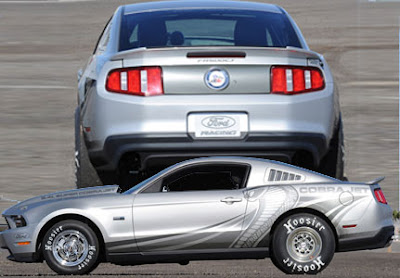 ...........................2010 Ford Mustang Cobra Jet
...........................2010 Ford Mustang Cobra Jet
 ...........................2010 Ford Mustang Cobra Jet
...........................2010 Ford Mustang Cobra Jet The 2010 Cobra Jet, like its predecessor, is a factory-built race car that is intended for NHRA Stock and Super Stock racing. The goal for the 2010 Ford Mustang Cobra Jet was to enhance the race features to further make its own place in NHRA history. The 2010 CJ will come with all of the features of the 2008 car with enhancements that include options for a full race-prepared automatic or manual transmission, drag race-specific shocks and springs, manual steering and brakes, 8.50 certified rollcage, and an Aeromitive return-style fuel system with trunk-mounted fuel cell.
Additionally Ford Racing engineers have developed for the 2010 Ford Mustang Cobra Jet a factory-first launch control/rev limiter that will allow drivers to preset the rpm after they stage the car. When they are ready to leave, all they do is put the throttle pedal to the floor; they don't have the engine speed to free rev. Previously, the launch control/rev limiter was only available as an aftermarket option.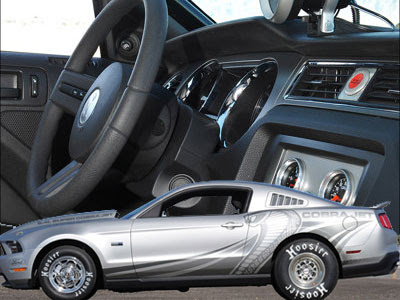 ...........................2010 Ford Mustang Cobra Jet
...........................2010 Ford Mustang Cobra Jet
 ...........................2010 Ford Mustang Cobra Jet
...........................2010 Ford Mustang Cobra Jet Much like Ford Racing's previous Mustang FR500S race car, the Cobra Jet Mustang will get its start at the Auto Alliance International (AAI) assembly plant in Flat Rock, Mich. The entire 50-car run of 2010 Cobra Jets will be built on the same production line that produces the 2010 Ford Mustang production car. Production of Cobra Jets will commence in January, with delivery of all vehicles expected in the first quarter of 2010.
All of the additional parts and pieces for the CJ can be found in the Ford Performance Parts catalog. And since the Ford Mustang Cobra Jet is produced from a base V-6 Ford Mustang, any consumer can turn his Mustang into a Cobra Jet by purchasing the parts from the Ford Performance Parts catalog.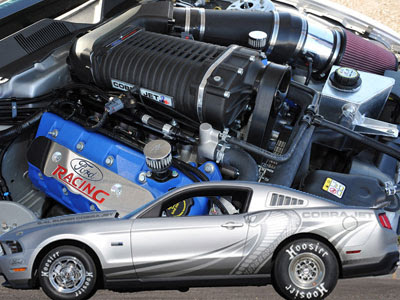 ...........................2010 Ford Mustang Cobra Jet
...........................2010 Ford Mustang Cobra Jet
 ...........................2010 Ford Mustang Cobra Jet
...........................2010 Ford Mustang Cobra Jet The 2010 CJ car features a choice for customers between two supercharged engines or three normally aspirated engines (pending NHRA approval). These options will allow the Ford Mustang Cobra Jet to be eligible for more classes in the NHRA, as well as competition with other sanctioning bodies, including NMRA, NMCA, PSCA and IHRA.
All 50 of the 2010 Cobra Jet Mustangs have already been ordered by Ford dealers for delivery to customers. For those customers who missed out on the limited run of 2010 Cobra Jets, Ford Racing has set a goal to provide future versions of the Ford Mustang Cobra Jet.
Labels: Ford Mustang, Race Car, Racing Car, Spors Car
The car is equipped with a standard production 720bhp Chevrolet V8 engine option built specifically for Ultima by our OE engine suppliers American Speed.
The Ultima GTR720 is a fully road going production car with standard features such as air conditioning, stereo system and sealed luggage compartments etc and is often used as a daily driver.
The Ultima GTR used for the successful record attempt was the factory's standard production specification Ultima GTR640 demonstrator, which has recently been upgraded with a 720bhp Chevrolet V8 engine, and hence now known as the Ultima GTR720. The GTR720 was fully road legal, road tyred and equipped with a standard 5 speed G50 transmission and a standard production engine option from Ultima's official OE engine suppliers American Speed. No traction control devices or ABS braking aids were used.
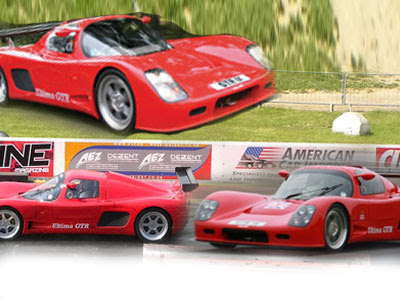 ................ Ultima GTR720 Chevrolet 720bhp V8 Engine
................ Ultima GTR720 Chevrolet 720bhp V8 Engine
This new catalogue of Ultima world records was once again strictly conducted, overseen and verified by an official from 'Datron Technology' who are acknowledged by the Guinness Book of Records and the motoring press as official timekeepers.. The use of their official Microsat GPS timing equipment which is based on incorruptible data provides irrefutable proof of the astonishing Ultima times. The Ultima GTR720 used for these records which is a company demonstrator was driven to and from the test venue.
The Ultima GTR720 is a fully road going production car with standard features such as air conditioning, stereo system and sealed luggage compartments etc and is often used as a daily driver.
The Ultima Factory who are the current world record holders, have for the third consecutive year smashed the world record for sprinting to 100mph and back to zero again in the all conquering, multiple world record holding 200mph Ultima GTR supercar.The Ultima GTR720 recorded a blistering 1min 9.9secs lap time, which demolishes the previous record of 1min10.7secs set by seven-time world Formula 1 champion Michael Schumacher in his Ferrari FXX track car. To put things into perspective the Ultima is almost 10 seconds per lap faster than the fastest road car that Ferrari produces which is the renowned £450,000 Enzo.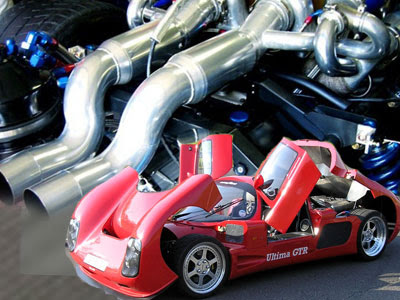 .................Ultima GTR720 Chevrolet 720bhp V8 Engine
.................Ultima GTR720 Chevrolet 720bhp V8 Engine
 .................Ultima GTR720 Chevrolet 720bhp V8 Engine
.................Ultima GTR720 Chevrolet 720bhp V8 Engine The Ultima GTR used for the successful record attempt was the factory's standard production specification Ultima GTR640 demonstrator, which has recently been upgraded with a 720bhp Chevrolet V8 engine, and hence now known as the Ultima GTR720. The GTR720 was fully road legal, road tyred and equipped with a standard 5 speed G50 transmission and a standard production engine option from Ultima's official OE engine suppliers American Speed. No traction control devices or ABS braking aids were used.
Richard Marlow commented, ' We always knew that the Ultima was more than capable of achieving performance figures of this caliber. There is no other supercar in history which can match the pace of the Ultima GTR in this discipline. Furthermore the GTR720 is available at a fraction of the price of all other supercars and is also fantastic to drive at more sedate road speeds with its road friendly engine. It is currently being used as my daily driver in all weather conditions. I expect with these latest officially verified world records for the Ultima GTR to retain its title for a long time into the future as the fastest accelerating and decelerating supercar of all time. Along with all of our other previous world records we have achieved over the past couple of years, this is a superb showcase to officially demonstrate to the world just what the Ultima is capable of achieving and we have gained unprecedented worldwide automotive recognition and respect for our marque in the process'.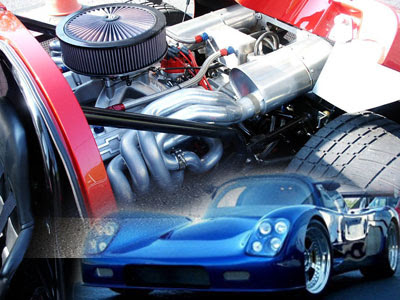 ................Ultima GTR720 Chevrolet 720bhp V8 Engine
................Ultima GTR720 Chevrolet 720bhp V8 Engine
 ................Ultima GTR720 Chevrolet 720bhp V8 Engine
................Ultima GTR720 Chevrolet 720bhp V8 Engine Driven by Ultima Director, Richard Marlow, the British built and designed Ultima GTR road car set a new world record time of a staggering 9.4 secs for the 0-100mph-0 sprint. The GTR scorched from 0-60mph in 2.6 secs, 0-100mph in 5.3 secs and braked to zero from 100mph in a mind blowing 3.6 secs, which are all in themselves road car world record times.
Ted Marlow commented, ' Quite frankly the Ultima has opened up a new league of road car performance with these new independently verified figures. The Ultima GTR with its superior power to weight ratio is now over two seconds quicker from 0-100mph-0 than the £750,000 McLaren F1 LM, and over one and a half seconds quicker than the £450,000 Ferrari Enzo. What's more the GTR720 performed these world beating statistics consistently and reliably time after time. The mind boggling 30-70mph time of just 1.8 seconds is further proof that the Ultima is so far ahead of any other car in terms of outright performance. ................ Ultima GTR720 Chevrolet 720bhp V8 Engine
................ Ultima GTR720 Chevrolet 720bhp V8 Engine Labels: Chevrolet, Race Car, Spors Car, Super Sports Car, Supercars
2009 LM5 McLaren Concept Car
The LM5 was designed as a vehicle which could rekindle the drama and sophistication of the legendary McLaren F1. And while McLaren have since revealed the MP4-12C supercar, it's not exactly in the same league as the technological tour-de-force which was the original F1.
The McLaren LM5 is a concept created by Matt Williams, a graduate of Coventry University's Transportation Design degree program. The LM5 was produced as his final year project.
The styling of the F1 was primarily dictated by function. However it also retained a unique sense of character and presence. Williams thought it would be interesting to develop the brand identity of McLaren - but more specifically the F1 model - and bring it into the 21st Century. And while the LM5 concept was designed to offer a similar personality and overall stance to the F1, it was also designed to utilize more extreme and race-influenced bodywork.

2009 LM5 McLaren Concept Car
The McLaren LM5 concept features the same three-seat layout with a central drivers seat as the old F1. All three sports seats have an extremely slim profile to reduce weight and free up interior space, and instead of conventional safety belts all the seats feature racing-style four-point harnesses. The multifunction steering wheel features a central display for the tachometer.
The proposed engine for the McLaren LM5 concept is a worked over 5.0 litre V10 sourced from BMW. Mounted midship in the carbon fibre pre-preg chassis this unit would make the LM5 a force to be reckoned with on both road and track.
While the LM5 is at the moment just one man's idea of what the F1's successor could look like, the design itself uses both past and present McLaren influences giving it a sense of realism. And It's important to remember that McLaren themselves have made it public knowledge that they're working on developing a successor to their most iconic car within the next couple of years.
Labels: Concept Car, Design Car, McLaren, Race Car, Spors Car, Super Car
SLR McLaren Mercedes-Benz Sports Car
This sports car combines the old yet astounding SLR race cars of the 50s and the latest and meanest technology of high-performance supercars. With the power of race cars and the sleek, curves and designs of a luxury car, the combination from the two car manufacturers is hard to beat.A blast from the past and a taste of the future, this might just be a good description of the latest sports car that came out from a collaboration of Mercedes-Benz and McLaren, two big giants in the car manufacturing industry. We're talking about the 2004 Mercedes-Benz SLR McLaren.
This supercar is definitely fast. SLR McLaren sports a 626-horsepower supercharged 5.5-liter V8. Also, it has a full carbon-fiber monocoque, features crash structures and body panels. And with the supercharge V8 engine, you can see the 2004 Mercedes-Benz SLR McLaren go from naught to 60 miles per hour in less than 3.6 seconds. Top speed has been measured to exceed 200 mph, a feat that can only be achieved by very few even among the high performance sports cars. It was the high-performance division of Mercedes-Benz which created the V8s. The AMG were the ones who hand-build the supercharged V8 engines with top notched precision and quality. It is not at a big surprise to see the supercharged 5.5 (5439 cc) liter dry sumped 90 degree V8 engine to produce around 466.8 kW at 6500 rpm (626 hp) and 780 N·m (575 ft·lbf) torque at 3250 - 5000 rpm. The numbers maybe daunting but the sound of the engine will appease the minds of those who long for the perfect high performance cars.
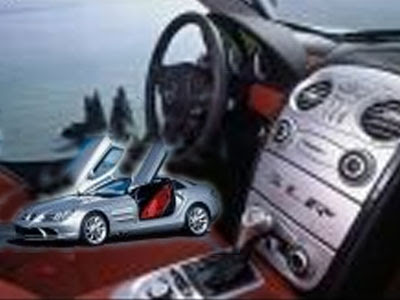
SLR McLaren Mercedes-Benz Sports Car
Mounting that V8 engine into the body of SLR exotic car is also not as traditional as one would like to expect. The engine in SLR sports car is placed in a front mid-engine position just behind the front wheels. Instead of using the traditional oil-pan, dry-sump lubricants are used. With this innovation, it is highly possible to mount the engine to a level that used to be unachievable. Because of the low position of the engine in the supercar's body, the results are more than one hoped. The new Mercedez-Benz SLR McLaren race car has better aerodynamics and better handling due to the lower center of gravity.
Not only does the mean features of the sports car that attracts attention but how the two car companies were able to fuse their own traditions and expertise into a single exotic car. For one, McLaren's expertise in Formula 1 has been imbibed wholly by the SLR's design. The composition of carbon fiber material that was used in the body of the new SLR sports car is so Formula 1. Because of this body, the Mercedes-Benz SLR McLaren has become more rigid and surprisingly strong.
The SLR also has a five speed automatic transmission. There are modes, the Sport, Comfort and Manual which basically covers every known driving style. Sport is for everyday use, Comfort for bumpy or slippery roads, and Manual gives you control over the gears either through the touchpad or the levers on the steering wheel. When you use Manual, you open up three more modes, namely Sport, Supersport and Race. Speed increased significantly as you go up shifts.
With all these features it is not surprising that the Mercedes-Benz SLR McLaren is classified as a sports car and a supercar. Remember to get this right, though, the "SLR" does not stand for "Sportlich, Leicht, Rennsport" which is German for "Sport; Light; Racing" as most people think. Its real meaning is "super-leicht, Rennsport" which means "super-light, racing." The sports car is being sold with a base price of €443,066 £300,000 or $450,000.
Labels: McLaren, Mercedes-Benz, Race Car, Sports Car, Super Car, Supersport Car
ZO6 Chevrolet Corvette
ZO6 Chevrolet Corvette The most powerful passenger car engine.
The Corvette Z06 is the fastest, most powerful car ever offered by Chevrolet and General Motors. It is comprised of an unprecedented level of capability and technology, making it one of the greatest performance values on the market.Chevrolet introduced the Corvette Z06 at the North American International Auto Show.
The Corvette Z06’s powertrain and drivetrain systems are matched to the LS7’s performance capability. The light, four-into-one headers discharge in to new, close-coupled catalytic converters and through to new “bi-modal” mufflers. The mufflers each feature a vacuum-actuated outlet valve, which controls exhaust noise during low-load operation but opens for maximum power.
With 500 horsepower and 475 lb-ft of torque, The ZO6 is the most powerful passenger car engine ever produced by Chevrolet and GM. The LS7 is easily identified under the hood by red engine covers with black lettering.
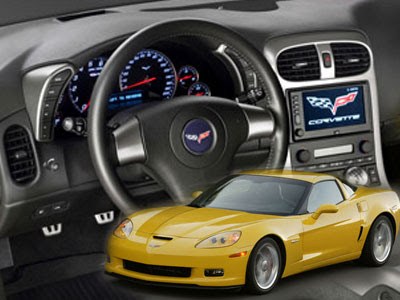
ZO6 Chevrolet Corvette
The aerodynamics of the Corvette Z06’s exterior were shaped by the experiences of the Corvette racing program, where high-speed stability and cornering capability are paramount. And while the racecars use large rear wings, the Z06’s elevated spoiler provides sufficient downforce to balance the road-worthy front splitter without adversely affecting aerodynamic drag. The Z06’s Cd is 0.31.
For all its race-inspired functionality, the Corvette Z06 is designed to be a daily drivable high-performance vehicle. To that end, comfort and convenience are held to a very high standard. HID lighting, fog lamps, leather seating, dual-zone air conditioning, cabin air filtration and Head-Up Display (HUD) with track mode and g-meter are standard.
Frogeye Sprite Austin Healey
Frogeye Sprite Austin Healey the first of several Sprite models.
The Austin Healey Sprite which was introduced in 1958 was a diminutive roadster with an unmistakable headlight arrangement.
The prominent headlights were initially intended to be flip-up units. However the cost of retractable headlights was to high, and instead they were fixed in what would have been the 'up' position. Their unusual location gave rise to the cars affectionate nickname, the "Frogeye" Sprite.
The Austin Healey Sprite MK I was powered by a 1.0 litre, inline, four cylinder engine which developed a grand total of 43 horsepower. Coupled to a four speed manual gearbox it was capable of propelling the car up to 84 mph.
The Frogeye Sprite (which was discontinued in 1961) was the first of several Sprite models. In 1962 the MK II Austin Healey Sprite was introduced. The MK II introduced several updates, the most noticeable of which was a more conventional headlight layout. From 1961 the Austin Healey Sprite was also sold as the MG Midget.
The prominent headlights were initially intended to be flip-up units. However the cost of retractable headlights was to high, and instead they were fixed in what would have been the 'up' position. Their unusual location gave rise to the cars affectionate nickname, the "Frogeye" Sprite.
The Austin Healey Sprite MK I was powered by a 1.0 litre, inline, four cylinder engine which developed a grand total of 43 horsepower. Coupled to a four speed manual gearbox it was capable of propelling the car up to 84 mph.
The Frogeye Sprite (which was discontinued in 1961) was the first of several Sprite models. In 1962 the MK II Austin Healey Sprite was introduced. The MK II introduced several updates, the most noticeable of which was a more conventional headlight layout. From 1961 the Austin Healey Sprite was also sold as the MG Midget.
Labels: Austin Healey, Race Car, Spors Car
The Austin Healey 3000
The Austin Healey 3000 was the replacement car for the Austin Healey 100/6. The Austin Healey 3000 was a superior car to its predecessor, equipped with many improved features and updated parts. During its production lifetime the Austin Healey 3000 went through three different versions, the MK I, MK II and MK III.
The Austin Healey 3000 MK I (1959 - 1961) was fitted with a 3.0 litre inline six cylinder engine developing 124 horsepower. The engine was equipped with twin SU carburetors. And the car featured disc brakes at the front.
The Austin Healey 3000 MK II (1961 - 1963) introduced several improvements and design changes. The engine was enhanced by the fitment of triple SU carburettors which bumped the power up to 132 horsepower. In 1962 the BT7 2+2 version was introduced. This seating layout became the only option from 1962 onwards. The Austin Healey 3000 MK IIa introduced wind-up windows, a curved windscreen, and a convertible hood.
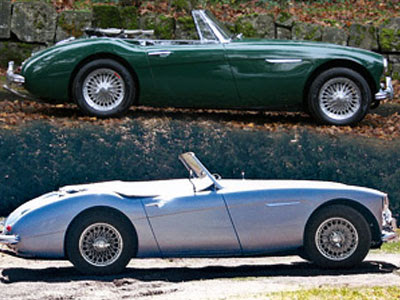
The Austin Healey 3000
The Austin Healey 3000 MK III (1963 - 1967) was the final version of the 3000 model. The performance was improved due to engine modifications. Peak power was raised to 148 horsepower, giving the 3000 MK III a top speed of 120 mph. The brakes were also enhanced with the fitment of a servo.
In 1967, due to new safety regulations in the cars biggest market - America, the Austin Healey 3000 was discontinued. It's replacement, the MGC, was nowhere near as popular as the Austin Healey 3000.
During its lifetime the Austin Healey 3000 proved to be a capable racing car. And it competed successfully in rally and road races around the world.
Labels: Austin Healey, Race Car, RacingCar, Rally Car, Spors Car
2007 Beck LM 800 Supercar twin turbocharged V8
The Beck LM 800 is built on the principle of lightweight and aerodynamic efficiency. It uses composite materials to to keep the weight down and a form over function styling brief to keep the frontal area and drag coefficient to a minimum.
The LM 800 is a supercar from Beck Engineering & Composites GmbH based in Switzerland. The Beck LM 800 went on show in January 2007 in Vienna.
The construction of the Beck LM 800 is similar to that found in Formula 1 race cars with a carbon, Kevlar and aluminium composite monocoque protecting the driver and passenger, as well as providing a rigid base to attach the engine and transmission mounts and front control arms of the chassis. The LM 800 has an electronically controlled, hydraulic active chassis also influenced by F1 technology, which reacts to telemetry data and helps to keep the car firmly stuck to the road.
The engine is a V8 especially produced by MTM for the Beck LM 800 with a displacement of 4.2 litres and, thanks to two turbochargers, delivers a performance of around 650 HP (variable from 550 - 1000 hp) to the drive shaft. The drive unit is designed in such a way that even acceleration is achieved across the entire range up to a top speed of over 217 mph. The semi-sequential 7-speed gearbox is perfectly coordinated with the Beck LM 800 and reacts instantly to driver input.
The wheels of the Beck LM 800 are specially made and formed from aluminium. An in-built hydraulic jacking system makes tire changes a breeze.
Subscribe to:
Posts (Atom)
